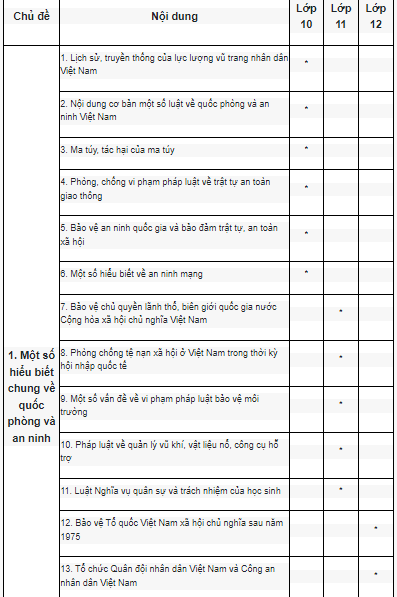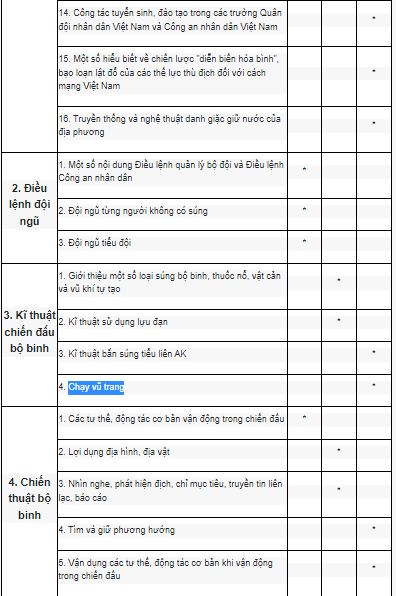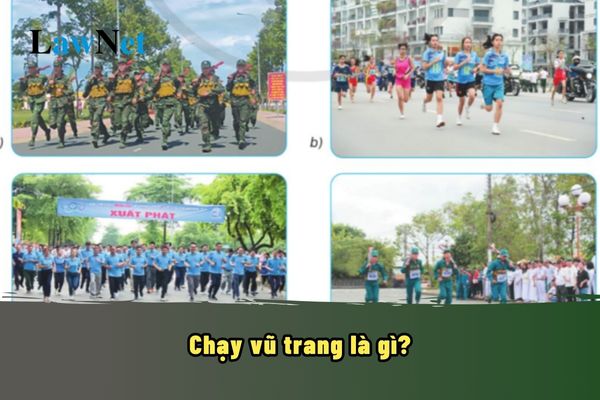What does Armed Running mean? What is the general orientation for the teaching methods of the National Defense and Security Education subject at the upper secondary level in Vietnam?
What does Armed Running mean?
Readers may refer to the following information on Armed Running:
| Armed running is a term that can be understood in various ways, depending on the context of use. Below are some common interpretations: In the field of the military and security: Combat training: Armed running is often understood as a form of military training, where soldiers run while carrying weapons and other equipment. The purpose of this activity is to enhance physical fitness, endurance, coordination, and acclimatization to moving quickly while carrying weapons. Combat operations: In some cases, armed running can be understood as a combat operation, when armed forces must move quickly to attack or retreat. In sports and training activities: An exercise: Armed running can also be a high-intensity exercise, combining running with bodyweight maneuvers or fitness equipment. The goal of this exercise is to increase strength, endurance, and agility of the body. |
Additionally, according to Section 5 of the General Education Program for the National Defense and Security Education subject (upper secondary level) issued with Circular 46/2020/TT-BGDDT:


Thus, armed running is also one of the contents in the infantry tactics section that students will learn in the 12th-grade National Defense and Security Education subject.

What does Armed Running mean? What is the general orientation for the teaching methods of the National Defense and Security Education subject at the upper secondary level in Vietnam? (Image from Internet)
What is the general orientation for the teaching methods of the National Defense and Security Education subject at the upper secondary level in Vietnam?
Under Section 6 of the Program issued with Circular 46/2020/TT-BGDDT, the general orientation for the teaching methods of the National Defense and Security Education subject at the upper secondary level is clearly outlined as follows:
- General Orientation
+ Promote the positivity, proactivity, and creativity of students; avoid unilateral imposition, and mechanical memorization; focus on nurturing the capacity for self-reliance and self-study so that students can explore, expand their knowledge base, continue to develop the necessary qualities and capabilities after graduating from high school; emphasize the practice of skills in applying national defense and security knowledge to identify and solve issues in practice.
+ Apply educational methods flexibly, creatively, suitable for educational objectives, content, student subjects, and specific conditions. Teachers can integrate multiple teaching methods in one topic.
Traditional teaching methods (lectures, dialogue, etc.) are used in a direction that promotes the positivity and proactivity of students.
Enhance the use of advanced teaching methods based on exploiting scientific and technological achievements in teaching by teachers and learning by students, especially applying the ongoing digital technology revolution, information and communication to highlight the active role of students in learning (discussion, role-playing, practice, etc.).
Teaching arrangements are diversified and flexible, combining individual and group learning, learning in and out of class.
Teachers teaching and students learning the National Defense and Security Education subject need skills in exploiting and referring to information about national defense and security at home and abroad through official electronic portals licensed by the Ministry of Information and Communications, to strengthen, supplement, and promptly update new knowledge serving the process of learning, research, and teaching.
- Apply specific educational methods
+ When teaching theoretical lessons, teachers need to use problem-posing methods, create problem situations, helping students actively apply their understanding of general knowledge from other subjects, existing experiences to participate in forming new knowledge, promoting a spirit of eagerness to learn, independent creativity in study and research.
+ When teaching practical lessons, teachers should apply the lecture method combined with sample execution on weapons, equipment, and visual teaching aids, technology, and support means in teaching, especially simulation technology, video films, etc.; organize scientific practice to allow students to observe and practice accurately and effectively; particularly ensuring absolute safety for learners and teachers.
+ Maximize the use of modern teaching tools, digital technology applications in teaching and guiding practice.
+ Emphasize organizing contests, defense and security education seminars, creative experiential activities in line with educational requirements and the practical conditions of schools and localities, considering this as a special educational method for the subject.
What are the regulations on the assessment of the National Defense and Security Education subject at the upper secondary level in Vietnam?
According to Section 7 of the General Education Program for the National Defense and Security Education subject (upper secondary level) issued with Circular 46/2020/TT-BGDDT, the assessment of the National Defense and Security Education subject at the upper secondary level in Vietnam is conducted as follows:
The assessment of the National Defense and Security Education subject aims to assess the student's achievement level in terms of qualities and capabilities compared to the required outcomes of each class, aiming to determine the position and acknowledge the progress of each student at certain points in their personal development process; at the same time, provide information for teachers to adjust teaching and educational management bodies to develop the curriculum.
Regarding assessment forms, it is necessary to combine regular assessment and periodic assessment, between teacher assessments and self-assessments by students; combine oral tests, written tests, practical exercises, and research projects; and integrate objective tests with self-assessment. Assessment of subject performance should be conducted in accordance with the following regulations:
* Regular Assessment and Periodic Assessment
- Regular Assessment: it includes official assessments (through knowledge acquisition activities in class, practice exercises, presentations, seminars, etc.) and unofficial assessments (including class observation, old lesson review, dialogue, student self-assessment, etc.) to gather information about the development of the qualities and capabilities of individual students.
- Periodic Assessment: is is conducted at the end of semesters and the school year in the form of objective or self-assessment tests or practice exercises; the assessment content focuses on awareness, and practical skills; cooperates with regular assessments to provide information for classifying students and adjusting educational content and methods.
* The assessment of the National Defense and Security Education subject is conducted according to the Regulation on the assessment and classification of secondary and high school students by the Ministry of Education and Training.

